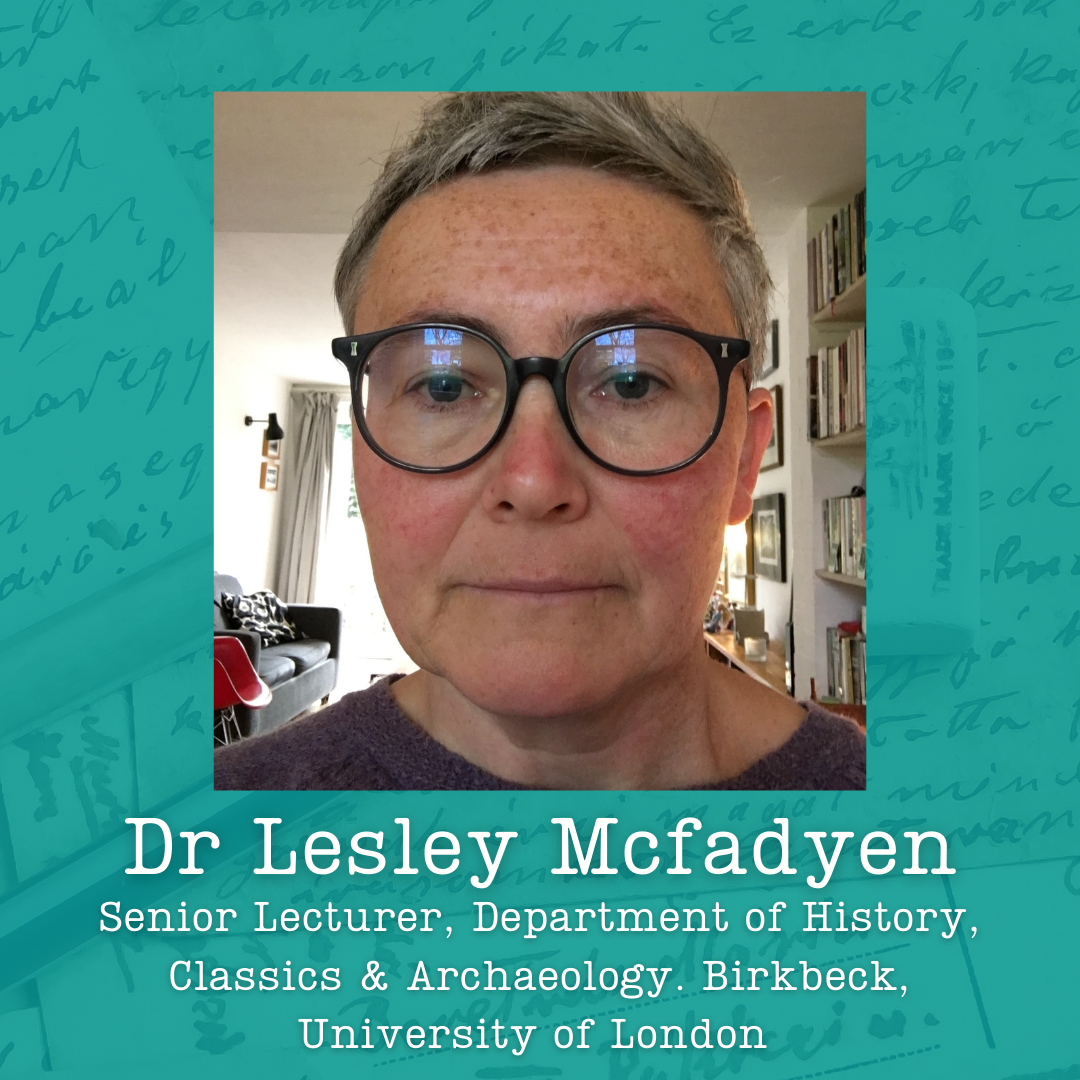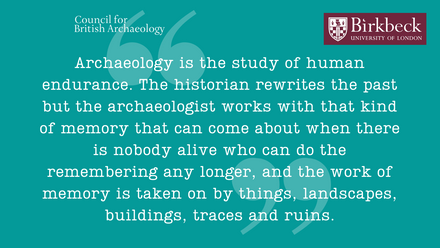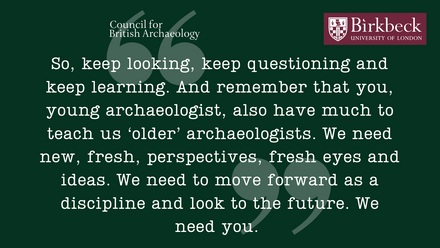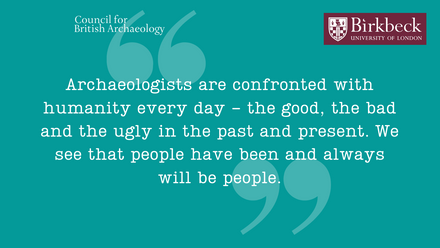Letter to a young archaeologist, December 2021
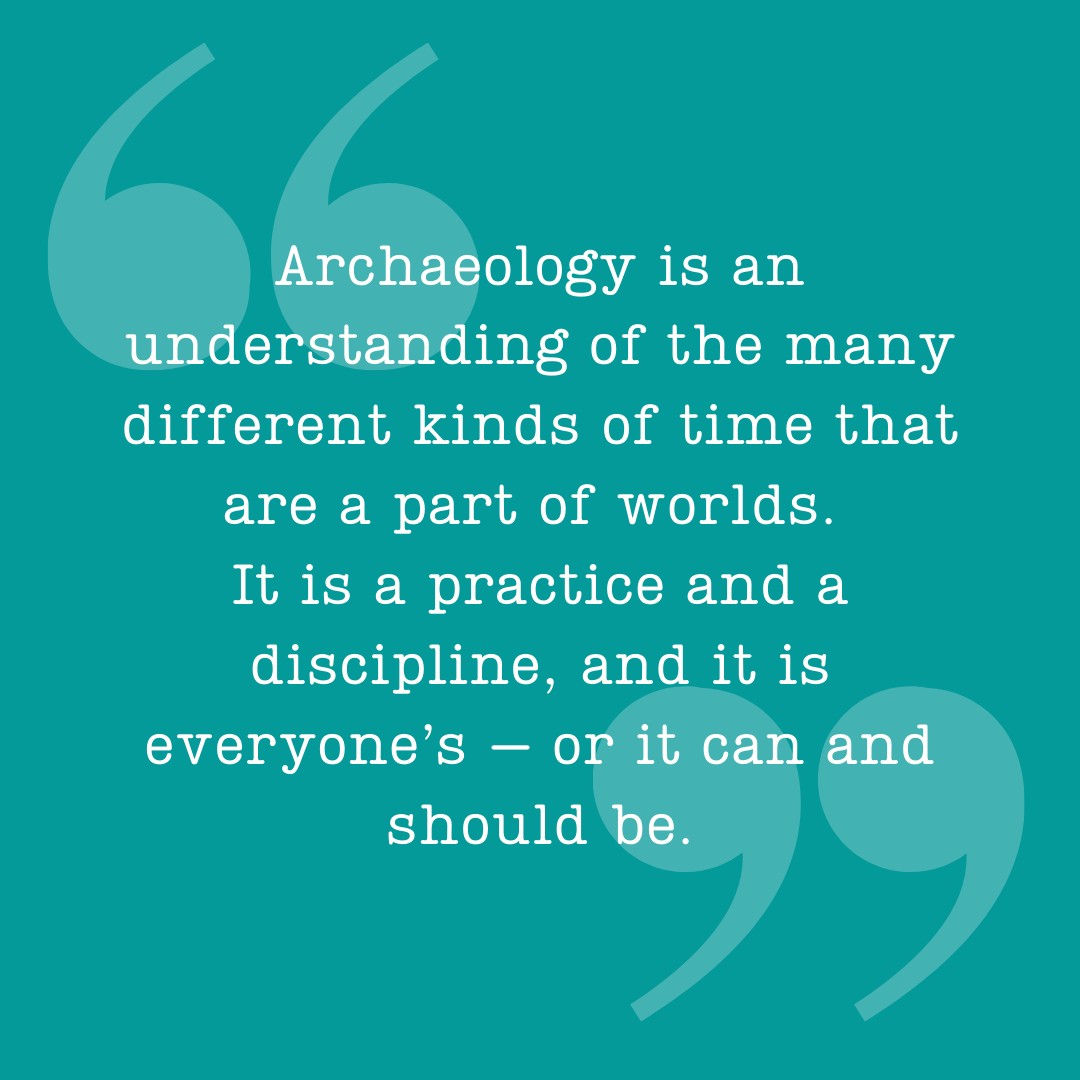
Dear Young Archaeologist,
In 2020, Manon Mollard, the Editor of The Architectural Review, ran a series of ‘Letters to a young architect’ which I read with joy. However, it wasn’t until the winter, and the second national lockdown in 2021, that I realised just how important and vital these letters are, and what the writing and reading of them does. These letters do not simply offer hope, they are a concrete connection with others, and that struck home whilst I sat at my dining table working remotely from Birkbeck. These letters are actions, with a force and direction for change, in order to begin something new. I held onto one in particular, it was the letter from Elizabeth Grosz on design for the future while designing in the present, and I started to think about letters to young archaeologists. You see, then, as well as the pandemic, and the climate emergency, there were warnings of government cuts to funding for the teaching of archaeology in universities. And added to this were individual universities closing, or considering the closure of, their departments of archaeology. And the government comments on contested heritage to national museums, and their White Paper Planning for the Future which had missed out development-led archaeology altogether. In dark times, letters are called for, it is time to act!
I contacted Claire about these letters, and together we wrote to Manon about her letter project. Manon kindly agreed that we could extend the project into archaeology. Since then Claire and I have contacted twelve archaeologists from Britain and Ireland, to write letters in 2022.
So archaeology, what is it and who is it for? Why is it important - how does it address climate change and matters of care? Archaeology is about understanding humanity through its engagement with material worlds. It is about the effects of human, plant and animal lives and it is about the effects of ocean movement and soil formation. Archaeology is an understanding of the many different kinds of time that are a part of worlds. It is a practice and a discipline, and it is everyone’s – or it can and should be.
An example, Birkbeck students have excavated Bronze Age landscape-scale ditches between dryland and wetland environments at Must Farm in Cambridgeshire, and dug through the peat that quickly formed in and over the ditches too. We have reworked the field boundaries that were cut by people in the Bronze Age in order for them to form portions of farmland on areas that were still available for settlement. The ways in which Bronze Age people dealt with climate and environmental change were material, but more importantly the impact of these environmental changes was material in the time of their lives. They acted, and they acted as a community. In archaeology, climate and environmental change, its emergency, is not abstract, it does not exist in the realm of theories and ideas, it is present as a material matter – we can all learn from that. Archaeology is important in how it cares about others too. From the archaeologist’s body being suspended on scaffolding so that their hands and tools can reach back down into ancient river silts in order to excavate the footprints of an other, to the particular ways we get to know those other lives through the relationship between the past and the evidence. There is a humility in approach that is important, and a perspective that builds from the ways in which we are adjacent to others. Archaeology is valuable for future-thinking, and it is yours, but perhaps I will leave more of that to the letter writers to come. For now, over to my co-writer, Claire.
For me archaeology at its core is about people. How people from the past and people today explore the world around them to understand themselves and others and the places, spaces and buildings around them. The archaeological toolkit provides a mechanism for us to try and understand, discuss and impact some of the key issues we face in society today such as climate change, migration, racism and health and wellbeing. By approaching these subjects from an archaeological perspective we draw on evidence from the past to drive investigation, critical thinking and discussion. This all sounds very serious, and of course it is, but archaeology is also something that brings us joy. The excitement of holding a piece of Medieval pottery that bears the mark of its maker, the peacefulness of spending time in the natural environment and taking time to explore the smallest details of the ground in front of you, and the camaraderie of sharing those magical moments with new people enrich our lives and help us feel more connected to the world around us.
As archaeologists we are also storytellers, sharing our discoveries with others and igniting their curiosity. I hope this series of letters will do just that, inspiring you to use your archaeological skills to explore the places you live and visit. At the CBA we believe everyone’s story is important and across the UK there is a phenomenal network of community groups and projects that can help you tell yours including the CBA Groups across England and Wales, our network of Young Archaeologists’ Clubs and the CBA Festival of Archaeology. By taking the time to share and to listen to others voices we create an opportunity to change our perceptions and perhaps approach the world and each other with a little more empathy.
Each month, over the course of 2022, we invite you to read the letters written by archaeologists from across the sector, addressed to you.
To new beginnings, Lesley McFadyen and Claire Corkill

